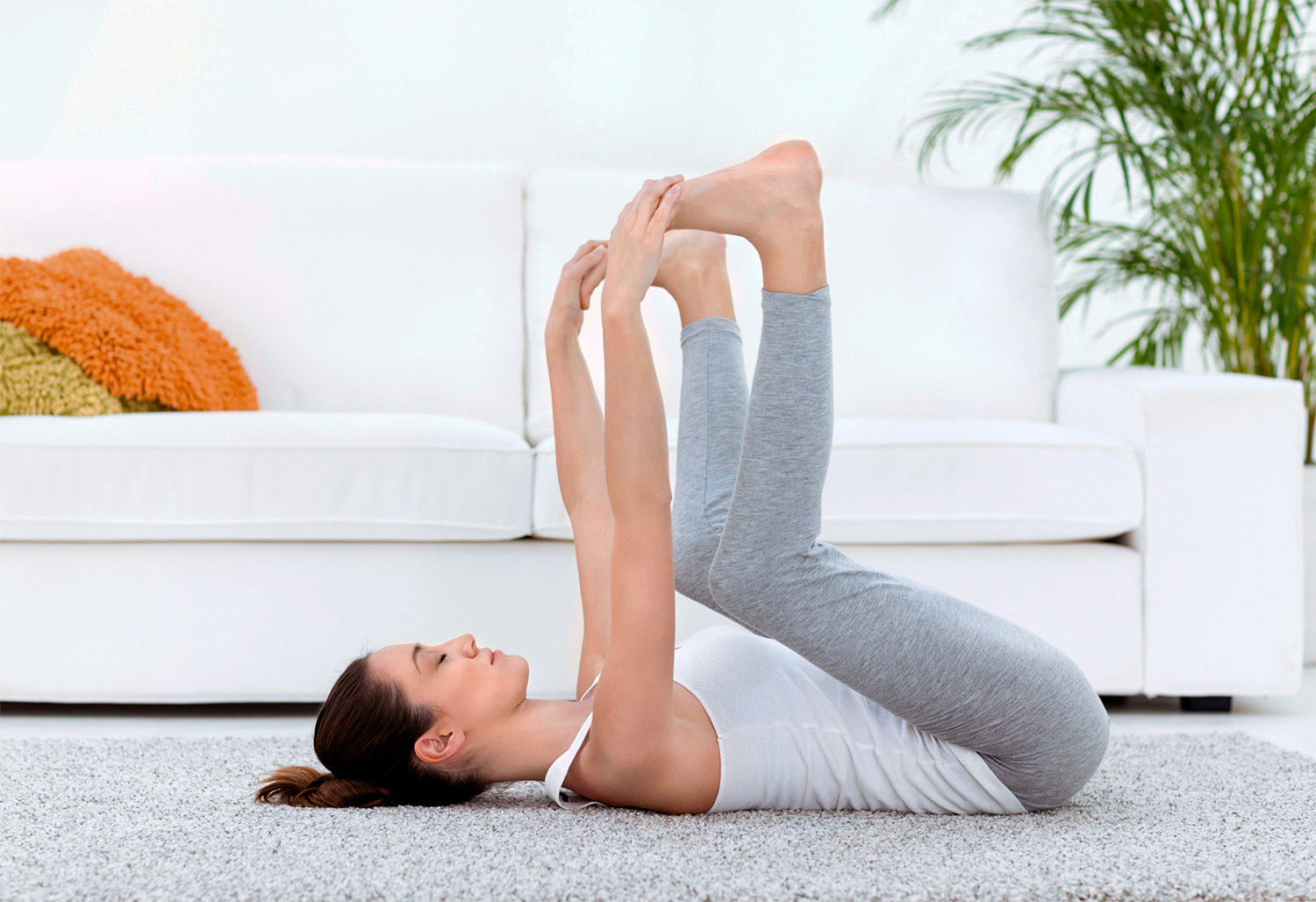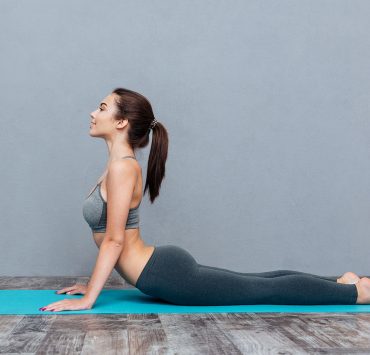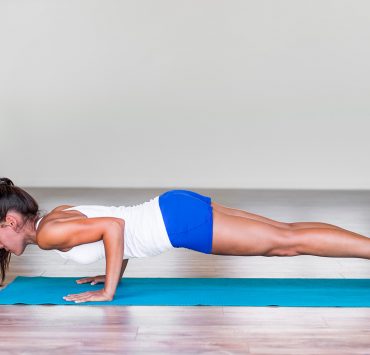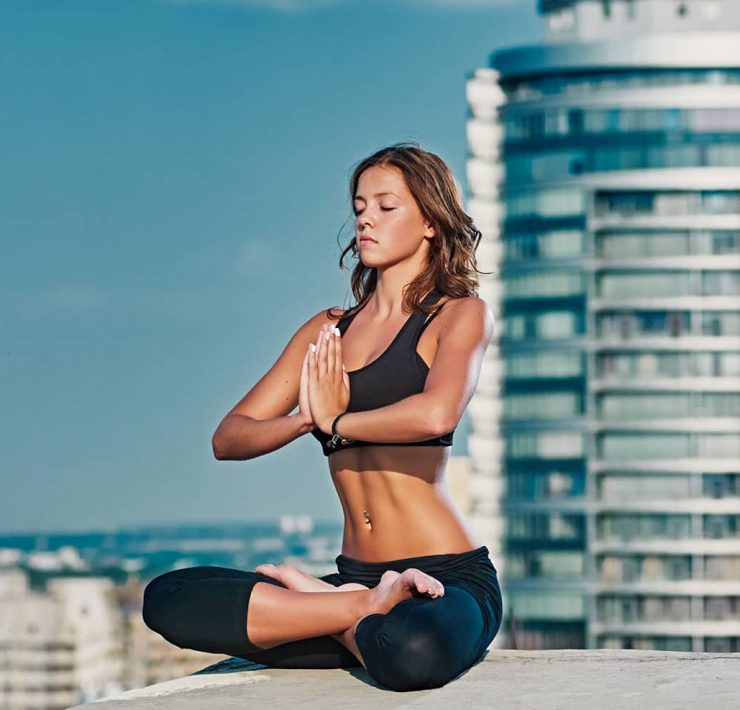
Andrea has been hosting yoga retreats in various locations worldwide…
Adulthood presents us with benefits and blessings that can only be uncovered as we grow with life and as we mature. Wisdom, deeper relationships, and the pursuit of a life with meaning are just a few of the gifts that begin to unfold naturally after childhood. However, as we leave our youth, we also take on many of life’s great challenges as we simultaneously lose some of the unique blessings and radiant traits that are pervasive in childhood. Worry often replaces ease in adulthood, and heaviness often replaces lightness, unrestricted self-expression, and an inner state of bliss and contentment. Yoga is a tool that can help us to reconnect with these innocent, youthful ways of being; in particular, we can call upon Ananda Balasana (or Happy Baby Pose) to help us sink into a state of complete freedom and release.
Meaning of Ananda Balasana

The name “Happy Baby Pose” is derived from the Sanskrit term Ananda Balasana. Ananda translates to “happy” or “blissful,” Bal means “child,” and asana translates to pose. From just observing the form of this pose, its name rings true. While practicing Happy Baby Pose, one takes on the physical form of a baby or small child resting on his or her back, carefree and completely at ease.
This pose has deeper implications than its playful form might suggest. Ananda Balasana awakens the inner child, bringing us back to innocent awareness of the world around us. While adulthood continually brings about stressors and personal challenges, Happy Baby reignites our capacity for pure observation of whatever is happening at present. Ananda Balasana soothes the active mind, urging us to let go, to relax, and to become enchanted once again with whatever moves around and through us.
Benefits of Happy Baby Pose

There are numerous reasons to practice Ananda Balasana, ranging from the physical benefits to the internal shifts it can promote. On a physical level, this pose helps to increase hip flexibility and release back tension. It also helps to strengthen the arms, lengthen the spine, and improve balance.
Ananda Balasana helps to open and activate the lower chakras, specifically Muladhara (or the root chakra) and Svadisthana (or the sacral chakra). The root chakra as an energy center in the body is responsible for feelings of being grounded, safe, and supported. The sacral chakra on the other hand is the center of our creativity, intimacy, and sensuality. When balanced, it helps to bring about a radiant youthfulness and encourages us to let go and to play.
To let go is to release the images and emotions, the grudges and fears, the clingings and disappointments of the past that bind our spirit. Jack Kornfield
Happy Baby Pose is a gentle hip opener. As the hips are known to store plenty of our unconsciously repressed stress and emotions, this pose helps to naturally release our unconscious, conditioned patterns and our past. As it does, it soothes the mind and helps to relieve stress.
While hip openers are wonderful contributors to the healing journey, it is important to note that this particular pose might feel incredibly vulnerable for certain people. It cases of trauma, caution should be exhibited. It might be beneficial to first practice other hip openers, such as Child’s Pose, Bound Angle Pose, and Figure Four Pose, in order to prep the body, mind, and heart for the deeper release that is possible through Happy Baby.
How to Do Happy Baby Pose

This is a seemingly simple pose that calls, often surprisingly, on our capacity for focus, balance, and release. Take your time with this pose, allowing it to deepen with continued practice.
- Begin on your back, ensuring that the spine is in a straight and neutral position. Consciously relax the muscles of the back.
- Draw your knees in towards your chest while keeping your hips and tailbone on the ground.
- Flex the feet so that your soles face the ceiling. Raise your hands to meet your feet and wrap your index and middle fingers around your big toes. Pull them gently towards you, allowing your knees to come closer to the body as well.
- If this is uncomfortable for the fingers, hands, or feet, wrap your hands around the outside of your foot to grasp the arch.
- Let your head rest on the mat with your neck in a neutral position. Feel into the hamstrings as you breathe into this pose. Keep the back relaxed and hold for 30 to 60 seconds before gently releasing.
Modifications

To make this pose more accessible or comfortable, there are a few modifications that can be made.
- If there is any discomfort or too much pressure in the hips or other joints, use a strap to support the pose. Place the strap around the arches and grasp either end.
- To ease pressure against the back of the hips and spine, place a blanket beneath the lower back for extra support. This will help to promote balance and stability in the pose.
- Use a pillow beneath the head to ease any neck discomfort. There should not be any strain in the neck while holding this pose.
- After drawing the knees into the chest, wrap the hands around the shins or ankles instead of the toes or feet. With practice, the stretch will deepen to help increase flexibility, balance, and reach.
Common Misalignments

There are a few common misalignments associated with this pose that can add unnecessary discomfort and tension. When practicing this pose, be sure to be mindful of:
- Back alignment. The back and neck should be straight to help promote balance and prevent strain.
- Pelvis positioning. The pelvis should remain on the floor. If the hips come up, press your tailbone back towards the mat. If necessary, release the feet and grab hold of the ankles or shins instead.
- Head and shoulder positioning. Refrain from lifting through the head or chest. Support the neck if necessary and adjust hand positioning to prevent unnecessary tension.
Contraindications
This pose is contraindicated with neck injury, high or low blood pressure, pregnancy, and knee injury. Those with injury of any other sort should also refrain from practice or alternatively, should work with an advanced teacher when practicing. When starting any new workout routine, consult with a healthcare practitioner to ensure that there are no contraindications that may affect you.
How to Deepen Happy Baby Pose

Since this pose offers far more than just a physical stretch, its practice can be taken a step further by setting the intention to rest and release.
As you settle into this pose, begin by focusing on the breath. Use the breath as an anchor to draw yourself further in a state of complete presence, expanding naturally through the belly on each inhalation and softening the chest and stomach on each exhalation. After a few grounding breaths, draw your awareness to the notion of release. Mindfully consider, without judgment, any unbeneficial thoughts or beliefs that can be released with each breath. As you exhale, witness yourself becoming more deeply connected to the earth beneath you while observing everything that no longer serves you being released through your breath.
Hold this pose for up to three minutes or for as long as is comfortable. With each breath continue to draw yourself more fully into the pose, releasing the old as you make room for each unfolding moment.
Follow Up Poses to Happy Baby

Ananda Balasana is a perfect pose to precede other resting poses. The following sequence will guide you into a restorative Corpse Pose, also known as Savasana.
- After holding Happy Baby Pose, slowly release by allowing your feet to come back down to the mat. Take a few deep breaths here to witness any energetic shifts within the body. Relax all back muscles fully.
- Move into Wind Relieving Pose by drawing the knees back into the chest. Wrap your arms around your legs now tucked in, holding onto each opposite elbow with each hand. If this is not accessible, you can hold onto any place on the lower arm that is within reach.
- Keep your neck aligned with the spine and your head on the mat. Breathe deeply as you hold this pose for 60 seconds.
- Slowly release your feet back down to the mat. Again, take a few breaths to rest between poses, observing any movements within mind or body.
- Leaving your right foot planted on the earth, raise your left foot and place the outside of your left ankle on your right thigh. Wrap your hands around your right thigh or reach through to grab hold of your right shin. Draw your right thigh towards you.
- Breathe into this first side of Figure Four Pose for up to 60 seconds, deepening the stretch on the later exhalations.
- Slowly release the right foot back down to the mat, followed by the left. Take pause and then repeat on the opposite side. Hold for up to 60 seconds.
- Release both feet back to the mat and when you are ready, extend both legs to rest on the floor. Allow your feet to fall naturally outwards and your arms to rest on the ground at a comfortable distance away from the body.
- Draw your awareness to the breath, and then take a few moments to scan the body, observing any residual tension that might exist. Guide your breath to these areas to release all stress and tension, helping you to sink further into the physical space beneath you.
- Hold here in Corpse Pose for five to ten minutes, allowing your breath to carry you through the practice.
Surrender into Ananda Balasana
When we bring a sense of surrender to this restorative pose, we come to find that even if only for a moment, we are able to embody the worry-free state of a child. The past dissolves, as does all worry of the future. As we breathe, we sink more effortlessly into the present moment – into our direct sensory experience. Play comes more effortlessly, as does contentment with whatever exists. Through Happy Baby Pose, we can learn to let go; we can learn to release our adulthood, even if only for a moment.
What's Your Reaction?
Andrea has been hosting yoga retreats in various locations worldwide since 2003 and continues to encourage her students to live as the best version of themselves. Yogic living provides the framework for her informative writing, which is chock-full of beneficial tips and tricks.














